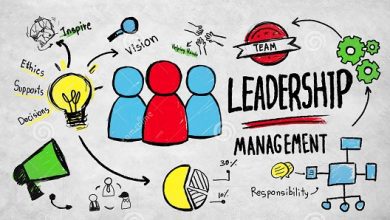What Is Greenwashing?
Greenwashing, which can be translated as “green washing” or even “green makeup” for the meaning it carries, is the practice of camouflaging, lying or omitting information about the real impacts of a company’s activities on the environment. In this article we will provide you some examples of greenwashing.
Corporations can appeal to this artifice through advertising campaigns and visual merchandising, among other techniques, aimed at manipulating public opinion.
This is an alarming problem , as evidenced by an investigation (text in English) carried out by the European Commission (EC) in 2021.
After examining 344 apparently dubious claims from different companies, the investigation came to the conclusion that:
- In more than half of the cases, the company did not provide enough guidance on its products for consumers to assess the accuracy of the information.
- Already in 37% of cases, the claim included deliberate claims like “conscious”, “environmentally friendly”, “ sustainable ”, trying to convey to consumers the idea that the product had no negative impact on the environment.
- In 59% of cases, the brand did not provide accessible evidence to support its claim.
Where And When Did The Term Greenwashing Come About?
The term greenwashing emerged in the early 1990s , after the publication, in 1989, of an article in New Scientist magazine, in which the expression “greenwash” was used for the first time.
She makes an analogy with another substantive term, “brainwashing”, used to designate brainwashing .
Therefore, greenwashing is a way of deceiving people by using dishonest communication practices.
It is worth mentioning that the responsibility for this type of conduct does not have to do with marketing, but with the lack of ethics of the companies that maintain it.
In this case, they misuse marketing channels in order to induce people to believe in half-truths or in something that does not exist.
Risks Of Doing Greenwashing
The main danger of greenwashing is that it prevents public engagement in the carbon emission targets set by international environmental authorities .
In this sense, humanity seems to have reached a critical point, as shown by a report by the Climate Crisis Advisory Council (CCAG) .
According to the document, zero carbon emissions in the atmosphere is no longer a solution.
The only way to reverse the escalation of global warming today is to negate these emissions .
Therefore, companies that continue to throw carbon, pollute the seas and waterways or throw debris on the ground contribute decisively to delaying the achievement of these goals .
Why Do Companies Greenwash?
The fact is that greenwashing gives companies that practice the false impression that it is something advantageous, because in this way they get rid of the costs of environmental responsibility .
After all, as an article on the Khan Academy website illustrates in a very didactic way , producing without carbon costs more.
Not to mention that, in some cases, producing in an environmentally responsible manner can force a company to review all or most of its processes.
It would be easier and more convenient to try to make up them or trick the public into thinking that she respects environmental protocols.
However, the sense of savings generated by greenwashing is illusory and unintelligent, because, up front, a very high price will be charged.
How To Identify Greenwashing?
Some companies disguise their lack of commitment to the environment by greenwashing with a good dose of talent and persuasion.
In any case, there are signs , some of them subtle, that show an attempt at manipulation.
In certain cases, as we will see later, the corporation simply decides to assume a green visual identity, with nothing to support this stance.
In others, more serious, the company lies or omits sensitive and public interest data, camouflaging practices that are dangerous to ecosystems.
Follow the next topics to know some of these “tricks” and know how to identify them when you see them around.
Camouflaged Environmental Cost
The environment can be attacked in many different ways .
Paper production, for example, may even be based on sustainable forests , but that does not make it “green” if polluting gases are emitted in the manufacturing process.
Failing to inform people about the real impacts of a productive activity is to camouflage the real cost of this activity to the environment.
Typically, companies that adopt this practice of greenwashing do so through packaging.
In them, logos with “green themes” are inserted , drawing attention to only one aspect of the product‘s manufacturing process, while others are camouflaged.
Mentions Without Evidence
Popular wisdom says that “whoever has a mouth speaks what he wants”.
In the case of companies that adopt greenwashing, statements are made without any proof of their veracity regarding a product or service.
This is what companies do, for example, that report a certain content of recyclable material in their products without any support from the control bodies.
That is, the product is sold as environmentally responsible , when in fact it continues to be manufactured without any concern for environmental impacts.
This applies not only to the production phase, but also to the disposal of waste, especially the packaging itself.
Hidden Exchange
More or less as in the camouflage of data, in the hidden exchange the company extols the benefits of one of its practices , hiding others that cause environmental damage .
In this type of greenwashing, a company can encourage the use of plastic materials, for example, under the pretext of saving water.
As is known, plastic is one of the most harmful compounds to the environment, due to the delay in degrading.
The hidden exchange is, in a way, a way of misleading the public , making everyone look one way, while obscure things happen in other parts of the process.
Inaccuracy In Communication
Another ruse used to throw the audience off is inaccurate communication .
This is what happens in packages that say “recycled product”, without specifying whether it is the product itself or the packaging.
This is also a tactic used by companies that print messages like “ eco-friendly ” or “sustainable product” without any explanation as to how and why they deserve these labels.
It’s all too easy to claim to be environmentally friendly without providing any evidence of it.
After all, how many consumers will be willing to investigate the veracity of this type of information, right?
Irrelevant Information
Nobody can boast of walking within the law , after all, it exists for everyone to comply with it, without exception.
That’s what companies that use the tactic of greenwashing do, in which they extol practices that they are forced to adopt .
The best example of this is the companies that print on their products and packaging that they do not use CFCs, the gas that destroys the ozone layer, which has been banned for years.
Not using it in aerosols is no merit, as this substance has been banned.
This also applies to home appliance manufacturers that try to use the energy efficiency seal as a commercial asset, as Inmetro forces them to produce within these specifications.
Lesser Of Evils
Greenwashing is, as we have seen, a way of manipulating public opinion so that it becomes favorable to the company that disrespects the environment.
It’s no use saying that a cigarette is organic , for example, when everyone knows the various health problems it causes.
That is, the communication may even be true in some statements, but they actually serve to cover up even more serious problems caused by the production or use of the goods.
Another example of this is the items that use smaller percentages of harmful materials in their production, but, even so, they continue to be environmentally harmful.
Lie
Lying is an even more serious problem, after all, the company is deliberately deceiving people with false information.
If not detected by the inspection authorities, it tends to perpetuate itself, generating very serious consequences in the medium and long term.
In this case, the company can claim whatever it wants to win consumer preference , without worrying about possible punishments.
If a brand says it makes products with recyclable materials, when it doesn’t, it’s encouraging people to discard materials with a big environmental impact .
There are also those who claim to have environmental certifications, when, in fact, they are not.
In many of these cases, only an efficient inspection by the public power can curb the practices.
False Labels
The practice of printing false labels on packaging and goods is equally reprehensible.
Using creativity, unscrupulous brands insert logos and labels into their products made to look like environmental certifications , when they are nothing more than the work of a designer.
Once again, it is worth emphasizing that the problem is not with design as an area of marketing, but with the lack of ethics of the professionals who commission these arts.
This can also happen in products that consume energy, in which false seals of energy efficiency imply that their consumption is low or within legal limits.
Opportunistic Segmentation
Among greenwashing practices, perhaps opportunistic targeting is one of the most unethical.
It consists of exploring a line of products that may even be environmentally responsible in some cases.
The problem is that the company does this without removing from the market other items that harm the environment, whether in their manufacture, consumption or when they are discarded.
In this way, it takes the opportunity to explore the niche of people who are concerned with green products , while harming the environment with other practices.
The company induces public opinion to think that there is a concern for nature, when, in fact, what matters is just profit.
Examples Of Greenwashing Actions In Marketing
One might even think that greenwashing pays off, as it appears to be a practice that goes unpunished.
The good news is that, in many cases, even large and powerful companies suffer consequences for adopting this harmful practice.
After all, the consumer may not even realize it, but the advertising control and inspection bodies have the means to detect lies and inconsistencies in advertisements.
There are also consumer protection agencies , increasingly attentive to brands that do not care for ethics in their activities and marketing efforts.
Below, learn about some of the cases that have become emblematic of what not to do in marketing actions focused on the environment.
1-Fiat
One of the most scandalous cases of greenwashing happened in 2017, when Fiat carried out a campaign that was questionable in its intentions.
In the best (or worst) “lesser of evils” style, she announced a supposed “green tire” , whose advantages were low fuel consumption and durability.
After investigation, it was concluded that, when it comes to tires, there is no way to be “green”, especially in relation to production and disposal.
The result was a warning from the Advertising Self-Regulatory Council, Conar, for the practice of greenwashing.
The automaker was forced to re-advertise the product, not to mention the alleged environmental benefits.
2-Carrefour, Cotton And Personal
A year before the greenwashing involving Fiat, three big companies had already tarnished their reputations for unethical marketing practices.
In this case, Proteste, the largest consumer rights body in Latin America, intervened.
Based on ISO standards, the entity carried out extensive research to assess the conformity of packaging for products sold at retail.
It was then that, in Rio de Janeiro, she caught a dozen products whose packaging contained false information , framing them in greenwashing.
Of the best known, the toilet papers of the Personal and Cotton brands stood out, in addition to the napkins of the Carrefour brand.
3-General Motors
Also in 2017, one of the largest automakers in the world, General Motors, was involved in a greenwashing scandal.
That’s because it stamped the prefix “Eco” on some of its engines and transmission systems, on the grounds that they would reduce greenhouse gas emissions .
Like Fiat, the brand ended up warned by Conar , which forced it to withdraw the nomenclature.
Of course, for this, the inspection body proved before that there was any evidence that the engines actually reduce pollutant emissions.
4-Nestlé
Nestlé made a negative impact on the corporate scene by launching an ill-fated campaign in Canada in 2008.
The greenwashing case involved one of its water brands, launched with the slogan “bottled water is the most environmentally responsible product in the world”.
The allegation did not go unnoticed, earning Nestlé several complaints from conservation entities and those linked to the protection of the environment.
After the bad repercussion of the case, the company went public to retract what happened.
5-Walmart
In the United States, the giant supermarket chain Walmart also had to bear the consequences of the practice of greenwashing.
The result was a millionaire fine , due to the sale of products containing inaccurate information about plastic in their compositions.
In the case, the punishment was applied by the state of California, which prohibits the insertion of terms such as “biodegradable” in plastic packaging.
The reason for this is precisely the lack of data on the time the material takes to decompose in nature.
After all, as we know, plastic is one of the most dangerous compounds that exist because of its resistance to time, taking, in some cases, more than 400 years to decompose.
How To Prevent Against Greenwashing?
As we have seen, greenwashing is punishable by inspection and control bodies, but consumers can also do their part .
The first attitude to be taken is not to buy anything from brands that adopt this type of practice.
Some types of greenwashing are even easily detectable, such as the practice of stating on packaging that plastic is biodegradable without specifying the time for this.
Therefore, be suspicious of any and all products with green-themed stamps , as chances are high that this is just a form of greenwashing.




